Using AI to create maths resources in July 2025
I am impressed how far we have come... but is it a good thing?
Give your students a chance to stay sharp this summer with our maths Summer Club from July 21st to August 29th!
By completing the Question of the Day (QOTD) each day in their free Eedi account, students can earn weekly prizes and build confidence for the new school year. Plus, 3 lucky winners will be chosen every week!
It’s a fun, easy way to keep learning going while rewarding effort!
For more details and to get your students set up, click here.
Long-time readers may remember that in October 2024, I experimented using AI to identify misconceptions, write diagnostic questions, and plan lessons. The results were mixed. In addition to some bizarre question choices and dubious maths, a key stumbling block was the inability of these AI chatbots to create suitable images, rendering all of geometry and much of algebra and statistics completely off-limits.
However, 9 months is a lifetime in the world of AI, and things have changed significantly.
Over the last few months, inspired by the principles Neil Almond shared during our interview and the approach taken on this website, I have been experimenting with AI to create various classroom resources. The results have exceeded my expectations.
In the first newsletters of the next academic year, we will use AI to create some of my favourite activity structures, such as Open Middle and non-routine problems. We will also explore how to break down routines into atoms, and plan entire I Do/We Do sequences complete with listening checks and Step-by-Step assessments.
However, to set all that up, I want to write a post outlining the foundational principles I follow when using AI to create resources so that you can use it and adapt it to create resources bespoke to the needs of your class. I also want us to consider a crucial question: Is creating resources in this manner a good thing?
General principles
Which AI Chatbot to use?
It is up to you. I use Gemini because we have access to it at work. However, ChatGPT, Claude, and similar tools should yield similar results. Experiment with them, and see which works best for you.
Prompt structure
I use this structure:
Context – give an overview of what you want
User’s Topic – state the number and form of the topics you will provide
Constraints & Guidance – explain what you want to include and what you want to avoid
Required Output Format – describe clearly how you want the output to look
Examples – share good examples of the output that the Chatbot can learn from
Why LaTeX?
As you can see below, I request that the output be in LaTeX format. LaTeX is a software system for typesetting documents. It stops the output looking like x^3 or 1/4, and opens the door for producing diagrams. I know nothing about writing in LaTeX, but fortunately, I don’t need to. I copy the LaTeX output of the prompt:
I then paste it into the Code editor at Overleaf and hit Compile on the right-hand side. Overleaf then generates a beautiful-looking PDF that you can download. This is 100% free.
The need to go back and forth
One thing you can be sure of is that the first output will not be exactly what you want. When this happens, study the output and then do two things:
1. Return to the AI and provide it with precise feedback, down to the numbers it has chosen in a particular question or the layout of a specific image.
Copy the updated code, paste it into Overleaf, and check the new output. Do this as often as needed to get the desired output.
2. Refine your prompt based on this experience. This will mean that when you use the prompt again for a different topic, you get to the desired output more quickly.
Sometimes, this back-and-forth can be frustrating. But ultimately, the AI can only output based on our inputs, and 90% of the time, I find the fault lies with me not being as clear as I could be with my requirements. This back-and-forth improves my explanations and clarifies my thinking.
The power of seeing the AI “thinking”
Many AI chatbots allow you to see the “thinking” behind their responses.
This is really useful in two ways:
It lets you see how your input has been interpreted, which may help you improve your feedback and the prompt if the output is not exactly what you want
When the output is what you want, looking back at the thinking is great CPD, allowing you to see the thinking that led to a quality resource.
The principles in action
Okay, let’s use the foundational principles above to create a worksheet that we could give students following an I Do/We Do so they can consolidate their understanding.
The prompt
1. Context
You are an AI designed to create sets of questions that give students lots of practice on a very specific skill
2. User’s Topic
The user will provide one specific skill they want students to practice
3. Constraints & Guidance
There should be 20 questions in each set
The purpose of the set of questions is to give students lots of practice of a specific skill so they gain confidence and fluency
The questions should only increase slightly in difficulty across the set
Do not weave in any different areas of maths or include any wordy, contextual questions.
4. Required Output Format
All output in a single block of LaTeX code that I can copy and paste, including tables and diagrams where appropriate. Two sections:
a) The questions, arranged to fit neatly on a worksheet (include several examples in rows if appropriate), with space for students to write their answers
b) The working out, plus solutions
5. Examples
I have attached some examples of sets of questions for you to learn from
(I uploaded a few Corbett Maths textbook exercises, choosing a range of topics across different areas of maths)
The steps
Copy the prompt and paste it into your AI Chatbot of choice - I will use Gemini:
Upload the examples you are sharing to train the AI Chatbot (the Corbett Maths ones)
Hit the enter key and the AI will begin to learn and tell you when it is ready
Choose your topic. I am going for: “Calculate the perimeter of a rectangle”. If you are a geek (like me), you can watch it “think”:
When you are sure the LaTeX code has finished generating, copy it
Go to Overleaf.com and create a free account
Create a new, blank project and name it something like “Maths worksheet creator”
Delete all the existing code from the left-hand panel:
Paste the code that the AI chatbot created into the left-hand panel
Click Recompile in the top-left of the right-hand pane, and Draft 1 of your worksheet will appear before your eyes:
Now the back and forth begins.
First, I wanted - and asked for! - diagrams. So, let’s go back to the AI Chatbot and politely remind it of this:
Copy the new output (ensuring it has finished generating), delete the code from the left-hand side of Overleaf, paste this new code in, and click Recompile.
Better, but not great.
Back we go again:
Better.
Now that the worksheet looks how we want, we can get into the pedagogy:
Not bad.
By the end of the worksheet, students are asked to do this:
And full answers are provided:
When we are happy, we can download the worksheet as a pdf
So what?
You may be thinking that all we have ended up with is a boring worksheet, no better than one we could have found on the internet.
But…
We are now free to continue refining this set of questions in any way we want. We could ask for more questions or fewer questions, easier questions or harder questions. We could ask for more questions on a page or fewer, with or without answer boxes. We could ask to include questions with fractional or algebraic lengths, remove the decimals, include two questions involving compound shapes, or mix in some area questions. We are free to shape the resource to the exact needs of our class, and we can do this with a few lines of text.
We can use this exact same prompt, without having to type it in again or upload the training material, to create worksheets for any topic, no matter how broad or specific. And we can do this by typing the new topic into the Chatbot:
Here are some examples using the exact same prompt:
Your challenge
Over the next few newsletters, I will apply the foundational principles described above to create high-quality, bespoke resource types - not just consolidation practices, but resources that encourage problem-solving or that we can use to aid our planning and teaching. In the meantime, I set you the challenge of experimenting. Think of a topic you are teaching soon, and see if you can create a classroom-ready resource. Don’t settle for the first output - use the time saved in the initial creation to dive deep into the maths, and then go back to the AI to suggest improvements.
Let me know how you get on in the comments!
But… is this a good thing?
Before we delve into this series on using AI to support resource creation, we must ask ourselves a crucial question: Is creating resources in this manner a good thing?
In terms of student learning, the answer depends on the quality of the resources created and how they compare to alternatives such as the centrally planned resources a teacher may have available or the resources they could create themselves from scratch. Big claim alert: as I hope to show over the next few newsletters, the quality of the output can be better than many of the resources I see in my weekly school visits.
More relevant to this discussion is the question of whether creating resources in this way is beneficial for teacher development. Here, we can draw the analogy with homework that I wrote about a few weeks ago. There, I argued that if it is the AI doing the thinking instead of the students (what Peps Mccrea calls cognitive outsourcing), then students will learn very little. The same is true for teachers.
Let’s compare the process I described above with two common ways that teachers acquire resources.
The first is to use centrally planned resources. These may have been created by members of the department or included as part of an external curriculum package. At its best, this approach to acquiring resources provides teachers with a model of excellence that they can incorporate into their mental model of effective lesson planning. In addition, as I wrote here, if teachers use the time that ready-made resources save them, they can (and should) use that time to prepare to teach – in other words, work through the questions themselves, and make tweaks based on their knowledge of their students. At its worst, teachers do not engage with the ready-made resource and simply click through the PowerPoint, developing little in the process.
Another way teachers may acquire resources to use in their classrooms is to write them from scratch. At its best, this allows teachers to tailor resources to the exact needs of their students and provides them with experience and knowledge in effective resource design. At its worst, it saps up teachers’ time and attention, leaving little time or attention to adequately prepare for the lesson (or have a life). In addition, without an example of excellence or an experienced mentor, the path to developing the experience to craft high-quality lesson resources is likely to be a long one, and I know this from personal experience.
Notice how all of the above are true when creating rescues on AI. If the teacher uses both the prompt and the first output without thought, they will learn little. However, if they work through the output and engage in a back-and-forth process, they may learn a great deal. Likewise, if a teacher creates a resource from scratch, and compares their output to the AI’s, or asks the AI for a critique, then they may reap the same benefits as they would working closely with an experienced mentor.
So, here is where I am at…
I believe I am learning a great deal by interacting with AI. I enjoy crafting the prompt to achieve the best possible first output. I love seeing what the AI produces, trying to understand its thought process, and then deciding upon the things I like and the things I don’t. My favourite part is the back-and-forths, especially those concerning example choice and sequencing – it reminds me of the conversations I used to have with Colm, a super-smart teacher I had the privilege to mentor during the first few years of his career. I can delve into pedagogy, and as a result, my assumptions are challenged and my communication is sharpened. In short, I feel I am developing as a planner and resource creator through my interactions with AI.
But, is this only true because I can use my 20-year experience and (questionable!) expertise to engage with the AI in this way? Would a novice teacher enjoy the same benefits? Or, am I deluding myself altogether, and in fact, I am not learning as much as if I didn’t use AI at all?
These are all big questions, and I do not have the answers. But, as ever, I am fascinated by what you think.
Is this useful?
What do you agree with, and what have I missed?
Let me know in the comments below!
🏃🏻♂️ Before you go, have you…🏃🏻♂️
… signed up for my free online workshop: 25 Tips for Teachers?
… read my latest Tips for Teachers newsletter about students, teachers and parents’ perceptions of learning strategies?
… listened to my most recent podcast about atomisation?
… read my write-ups of everything I have learned from watching 1000s of lessons?
Thanks so much for reading and have a great week!
Craig







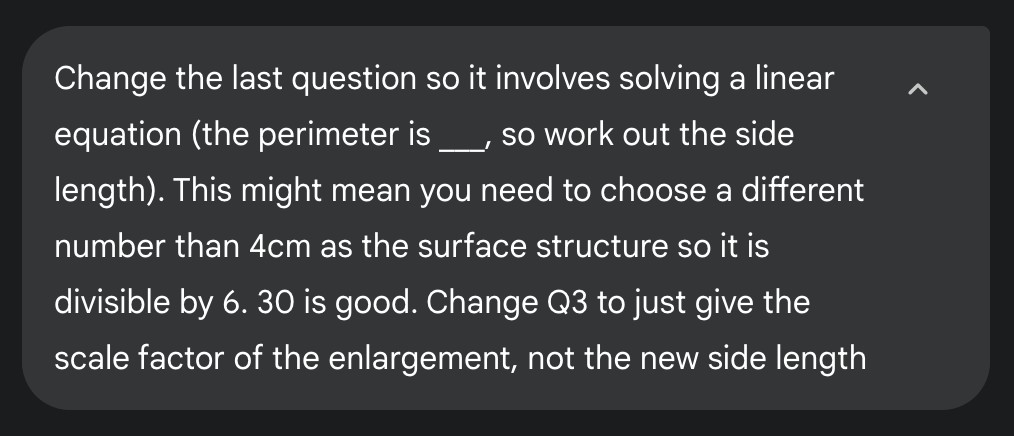





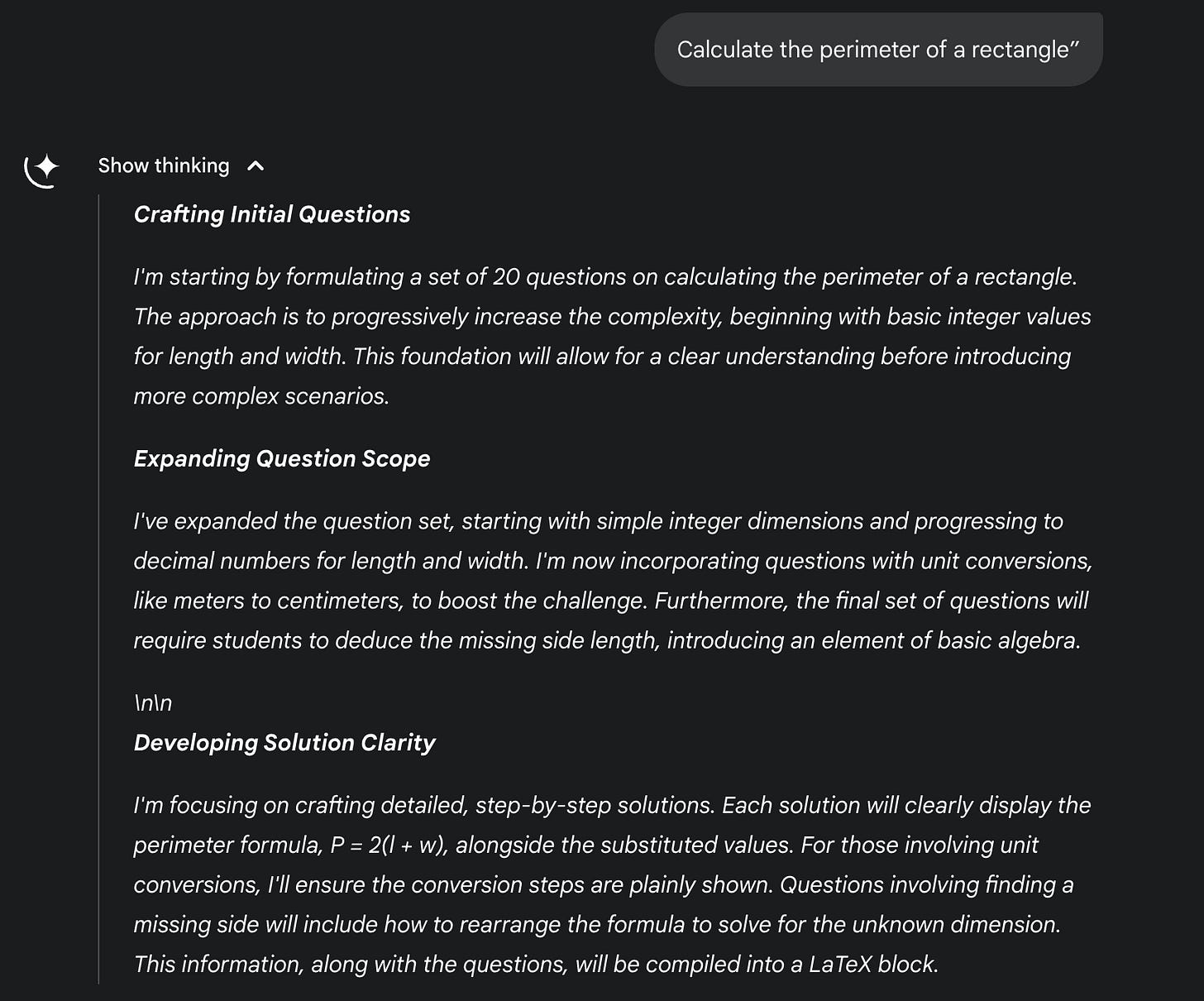
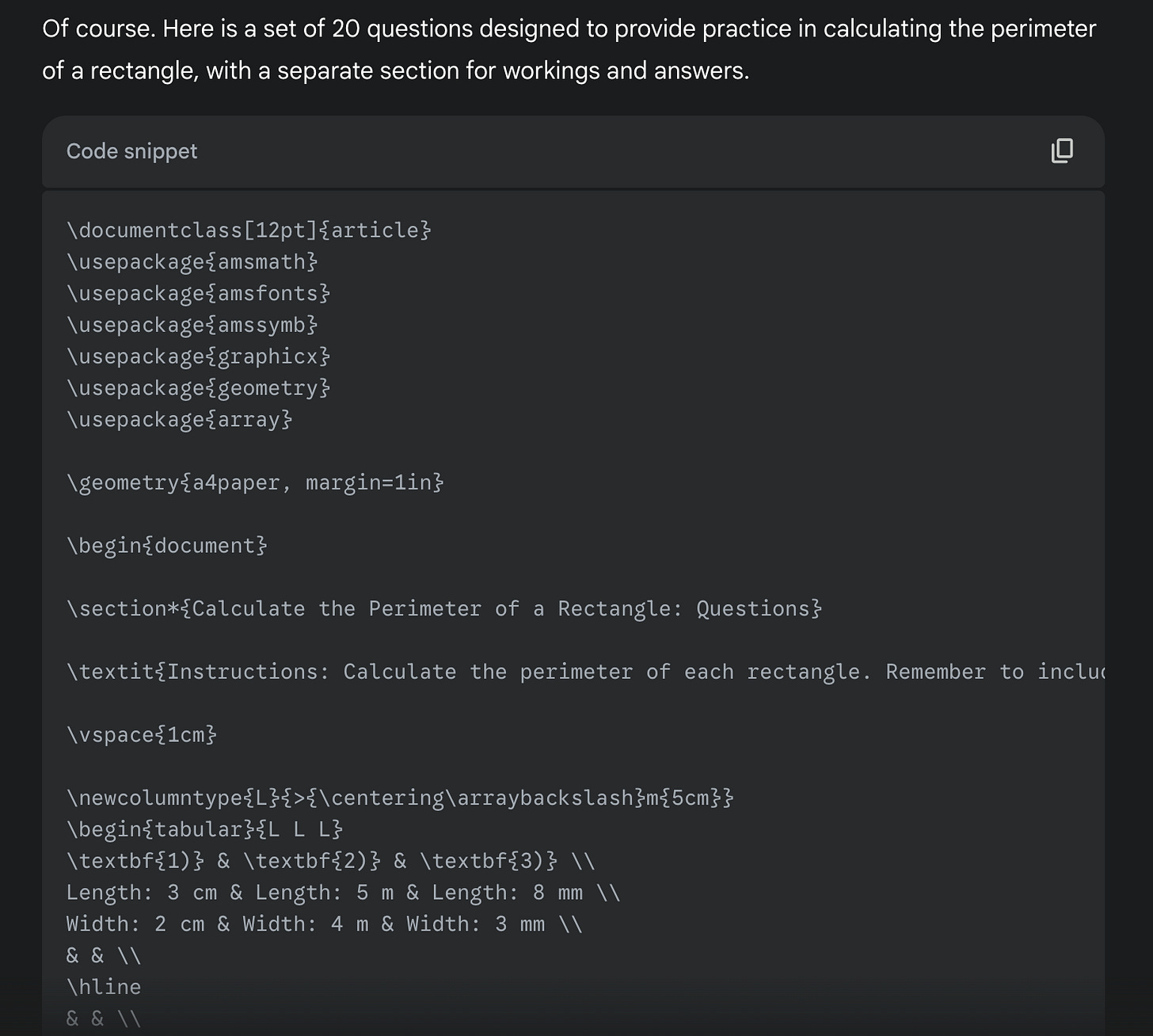











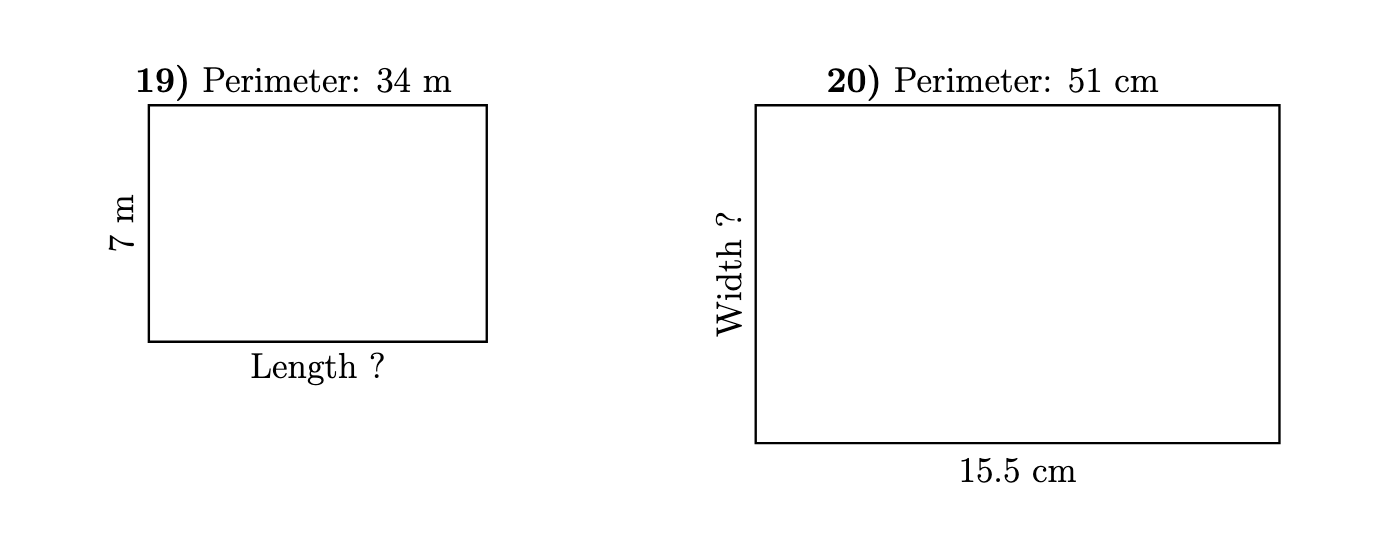




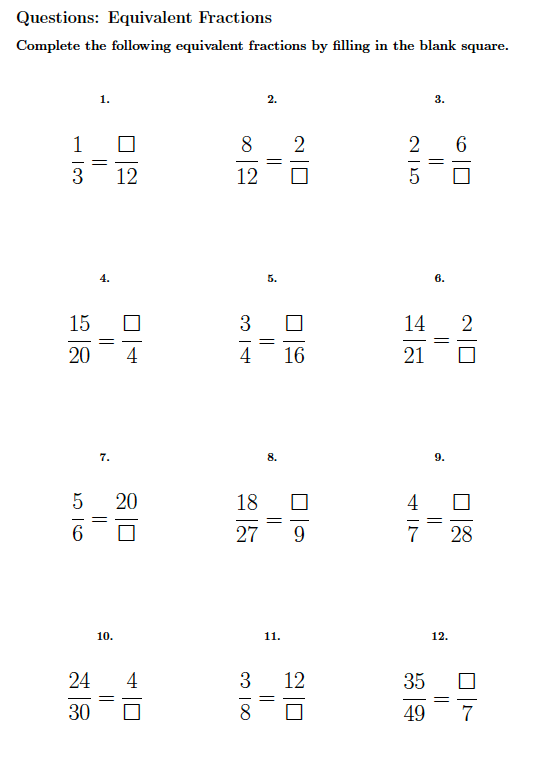


I think it's me that came up with this method.
You can see some more of my experiments here:
https://aimaths.weebly.com/
I hope that shows the real power of just how deep you can get with it.
I'm currently working directly with Kris Boulton on the unstoppable learning program, so hopefully I can harness his wisdom and produce some highly bespoke resources using LaTeX.
This is fantastic. As a newly qualified Mathematics teacher after a 25 year career in the AI industry then I have seen so much inefficiency in the education sector which can be solved by AI. One of my key frustrations so far in my very short journey in teaching is lesson planning. It takes so long to create a great lesson despite there being a huge amount of content however the quality can be hit and miss.
I have been experimenting with generative AI (initially Chatgpt but have moved to Mistral.ai as I want to support European AI organisations) to create both lesson plans and content and the technology is getting better. The key is the prompt as you say and as I learn the academic principles behind mathematics pedagogy then I think my prompts are improving which is delivering better results.